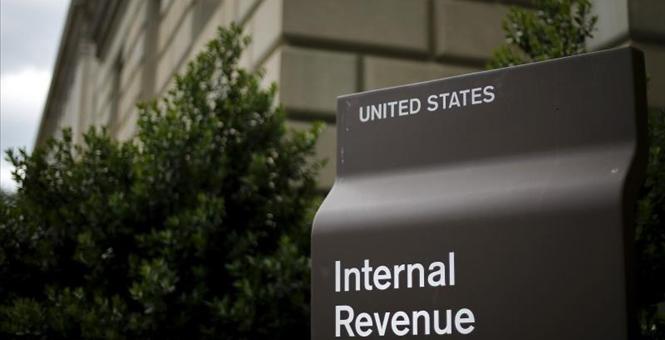Tax Cuts, King Dollar and growth:From JFK to Reagan to Trump
By Larry Kudlow
TownHall.com
Fifty-four years ago, at The Economic Club of New
York, President John F. Kennedy unveiled a dramatic
tax cut plan to revive the long-stagnant U.S.
economy. He proposed lowering marginal tax rates for
all taxpayers and reducing the corporate tax. He
advised lowering the top tax rate from 91 to 65
percent, and closing tax loopholes. Five times
during the speech he used the word "incentive."
In perhaps the most famous line from that
path-forging speech, he said, "In short, it is a
paradoxical truth that tax rates are too high today
and tax revenues too low, and the soundest way to
raise revenues in the long run is to cut rates now."
Kennedy had already in 1962 lowered investment taxes
on business. And after his tragic assassination, in
early 1964, his broader tax proposals were passed
into law. And they worked. The U.S. economy grew by
roughly 5 percent yearly for nearly eight years.
Almost 20 years later, President Ronald Reagan
launched a 30 percent tax rate reduction to save the
economy from the high-unemployment, high-inflation
1970s. Reagan acknowledged many times that he was
following in Kennedy's footsteps. Under Reagan, also
known as the Gipper, tax rates were slashed from 70
percent to 28 percent, corporate taxes were cut, and
numerous loopholes were closed. And the American
economy grew mostly between 4 and 5 percent annually
for over 25 years.
Both Kennedy and Reagan followed a simple growth
model that I call "tax cuts and King Dollar." Both
men also reached across the aisle to garner
bipartisan support for their plans.
This past week, Donald Trump went a long way toward
joining their ranks. Speaking before The Economic
Club of New York, he delivered a positive,
optimistic message of growth that falls squarely
inside the JFK-Reagan model.
"My economic plan," he said, "rejects the cynicism
that our labor force will keep declining, that our
jobs will keep leaving and that our economy will
never grow as it did once before." Optimism.
He established a goal of 4 percent economic growth,
which would double the stagnant rate of the past 15
years. The centerpiece of his plan is a reduction in
business tax rates for large and small firms, to 15
percent from the current uncompetitive 35 percent.
He offered immediate expensing for new investment,
and a 10 percent repatriation rate to incentivize
American firms overseas to bring $2.5 trillion home.
High business taxes are the biggest obstacle to a
return to rapid economic growth. Abundant research
has shown that the best way to raise wages and
create jobs is to slash business taxes. Within five
years a business tax cut will pay for itself, and
then some.
Importantly, Trump plans to reduce individual tax
rates to three brackets of 12, 25 and 33 percent. He
would cap deductions for the wealthy and close
special-interest loopholes. Middle-income wage
earners will be the biggest beneficiaries of these
reforms.
To cap it off, he will roll back out-of-control
regulations, unleash American energy and abolish the
Obamacare failure.
Following the successes of the JFK and Reagan tax
reforms, Trump's strategy is likely to generate 4 to
5 percent growth over time. A rising tide will lift
all boats.
The contrast between the presidential contenders
could not be starker. Hillary Clinton would raise
taxes on so-called rich people, corporations,
capital gains, financial transactions and
inheritance. Has there ever been an example of
America taxing its way into prosperity? Never.
Trump has an economic recovery-and-prosperity plan.
Clinton has an austerity-recession plan.
Historically, in presidential elections, the
optimistic growth plan nearly always wins.
That said, Trump's view of monetary policy,
especially surrounding the dollar, needs to be
resolved. During his speech, he charged that the Fed
is "totally controlled politically." Elsewhere, he
has stated that Fed Chair Janet Yellen is keeping
interest rates ultralow in a political effort to
boost Democratic fortunes. I disagree.
Yellen doesn't control the Fed monolithically. And
the real debate about interest rates is going on
inside the Fed.
True enough, the Fed needs radical reforms. In
particular, it needs to replace its failed
forecasting models and be rid of the academics who
overwhelm the Fed system. But as New York Sun editor
Seth Lipsky has taught us, the best way to
depoliticize the Fed is to develop a standard of
value, to make the dollar strong, reliable and
stable. In other words, it's to develop a monetary
rule.
JFK and Reagan's growth model included tax cuts and
a steady dollar. Trump has taken a gigantic step
toward restoring prosperity with his
tax-cut-centered fiscal policy. Hopefully he will
soon turn to a sound-dollar policy to bolster the
growth impact of lower tax rates and regulations.
And hopefully he will then pound away on all this on
the campaign trail.


